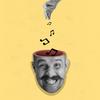How to Make a Slideshow and Create Beats
In today's digital age, creating engaging content is more important than ever. Whether you're looking to make a slideshow with music for a special event or wanting to dive into the world of music production by learning how to make music beats, there are countless resources and techniques to explore. In this article, we’ll guide you through the basics of both processes.
Making a Slideshow with Music
A slideshow can be a powerful way to tell stories, present information, and share memories. By adding music, you can evoke emotions and enhance the overall experience. Here's how you can make a slideshow with music:
Step 1: Gather Your Materials
Start by collecting all the photos and videos you want to include in your slideshow. Consider the theme or message you aim to convey, as this will guide your selection process. Ensure the media you're using is high-quality for the best presentation.
Step 2: Choose the Right Software
Several software options are available for creating slideshows, ranging from beginner-friendly to professional-grade. Some popular choices are Adobe Spark, PowerPoint, and Google Slides. Consider the features you need, such as transitions, text overlays, and music integration.
Step 3: Select an Appropriate Track
Choosing the right background music is crucial. Think about the mood you want to set and select a track that aligns with your theme. You can explore royalty-free music libraries if you need inspiration or don't have a track in mind.
Step 4: Compile and Edit
Organize your photos and videos in the order you want them to appear. Use the software's editing tools to add transitions, effects, and text to enhance your slideshow further. Add your selected music track and adjust the timing to ensure smooth synchronization.
Step 5: Review and Export
After you've edited your slideshow to perfection, review it to ensure everything is as desired. Export the file in a format suitable for your intended platform, whether it's for web sharing or a live presentation.
Creating Music Beats
Creating music beats can be a rewarding creative process, allowing you to express yourself and craft unique sounds. Here's a guide to help you get started:
Step 1: Understand the Basics
Before you create your first beat, it's important to understand the basics of music theory, rhythm, and structure. Familiarize yourself with common terms like tempo, BPM (beats per minute), and time signature.
Step 2: Choose Your Beat-Making Software
There are numerous Digital Audio Workstations (DAWs) available, such as FL Studio, Ableton Live, and Logic Pro. Each offers various features, so take some time to explore what suits your style and needs best.
Step 3: Explore Sound Libraries
Most DAWs come with sound libraries that offer sounds and samples you can use. Spend some time exploring these resources to find sounds that inspire you and that will form the basis of your beats.
Step 4: Start Laying Down Your Beat
Begin by setting your DAW to the desired tempo. Create a simple drum pattern using kick, snare, and hi-hat sounds. Use the DAW's sequencer or drum grid to arrange these sounds into a loop. Gradually add elements and layers to build complexity.
Step 5: Mix and Arrange Your Beat
Once you're satisfied with your beat's foundation, begin mixing. Adjust levels, apply effects, and experiment with different arrangements to enhance your beat's overall sound quality. Consider how different sections of your beat can add variation and keep listeners engaged.
Step 6: Share Your Creation
After completing your beat, you may want to share it with others or explore opportunities for collaboration. Platforms like SoundCloud and BeatStars are popular choices for showcasing your work. Don't forget to explore the world of distribution with platforms like SoundOn to expand your reach and connect with new audiences.
Creating a slideshow with music and learning how to make music beats are complementary skills that can enhance various projects. By combining visual storytelling with sound mastery, you can create unforgettable experiences that resonate with audiences. Happy creating!







